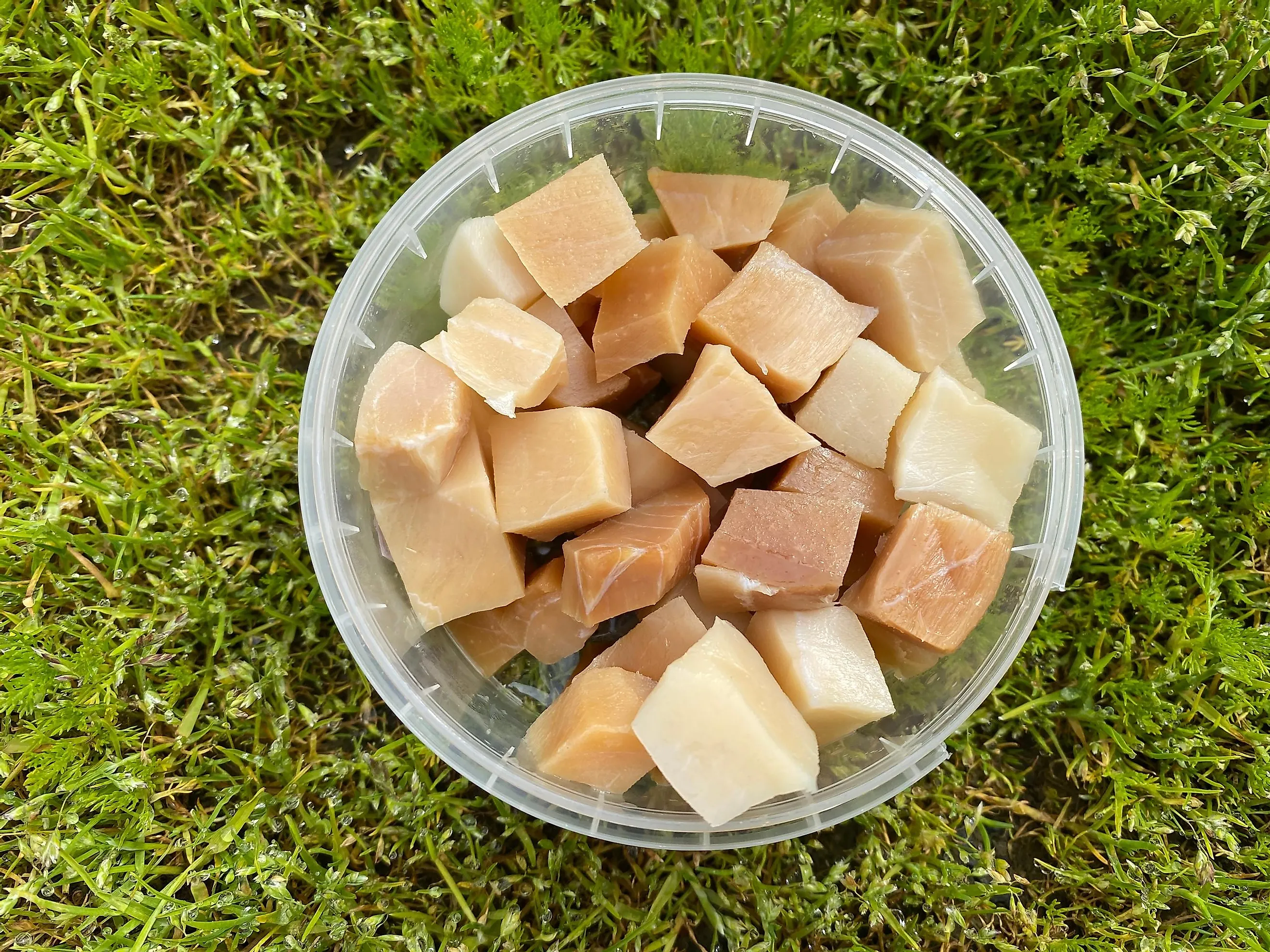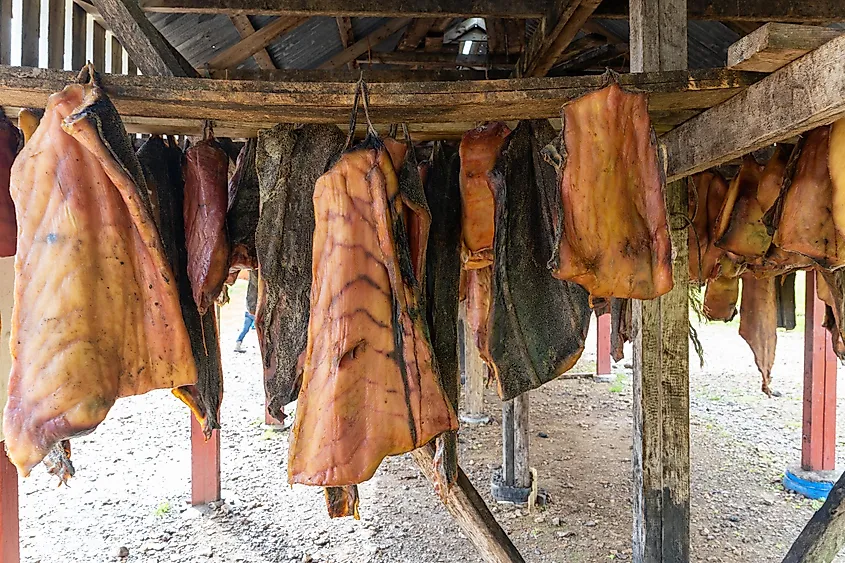
Hákarl: Iceland's Buried, Rotten, Fermented & Dried Delicacy
One’s man’s trash is another man’s treasure. This is perhaps never more than case than with one unforgettable dish in traditional Icelandic cuisine, the decomposed shark carcass known as “hákarl”.
As a heads up, upon first encountering hákarl, one should expect a full-on assault on the nostrils from a putrid smell that is reminiscent of rotten cheese mixed with ammonia. If one survives the gag-inducing smell, he or she may feel brave enough to try and sample this fermented shark flesh.
This is highly discouraged for outsiders, however, if one dares to be so bold, he or she must be sure to prepare to torture the taste buds by consuming what is perhaps the most unimaginable, rancid thing on planet earth.
Sound appetizing? Maybe not to outsiders; yet, to many Icelanders, it’s a different story.

Why Rotten Shark?
When their Viking forebears settled the island centuries ago, Greelandic shark, which is abundant in the icy waters of the North Atlantic, became the main staple of the island. The problem with the Greenland shark, other than the fact that it is fairly ugly, is that the meat is toxic to humans.
At the time, it was one of the only sources of nourishment for the island’s small population, so to conserve as much food as possible, the resourceful Vikings developed a preservation technique like no other to purify the poisonous shark meat.
How Is It made?
Kæstur Hákarl, or hákarl for short, is prepared through a time-honored process. The same process used in Viking times is still used today.
First, the shark is beheaded.
Then, to eliminate poisons, such as trimethylamine oxide and uric acid (a compound found in urine), a shallow hole is dug in the sand and the hákarl is placed in it with stones, sand, and gravel placed on top. The pressure of the stones causes liquids to seep out over a period of 6-12 weeks, a time frame that allows the shark to ferment properly.
After this, the fermented shark - which is 24 feet long on average - is taken out of the ground, cut into long pieces and hung up to dry for several months.
Many hákarl preparers claim they know the meat is ready just by the smell and once a characteristic dry, brown crust forms. When the time is right, the pieces are taken down, the crust is removed and the meat is cut into slices and served and enjoyed by many.
Today to get hákarl, you don't need to bury your own shark, it can be purchased as a prepared food in Icelandic grocery stores.
Icelandic Cuisine: As Unique as Its Culture
Iceland, a remote island in the North Atlantic, is a country filled with majestic natural beauty, vast resources, and a profoundly rich culture that is preserved by its small, but proud population of 323,000.
Because of its remote nature and small population, Iceland has become something of a novelty in the minds of outsiders and this concept is no different in the perception of Icelandic cuisine which, along with hákarl, features a variety of other unheard of delicacies such as Brennivín, Svið, Slátur, and Hangikjöt.
Brennivín (Alcholic Beverage): Brennivín is translated as “burning wine.” It is a schnapps made from fermented potatoes and caraway and delivers a powerful punch to the system of even the most seasoned of drinkers.
Svið (Sheep’s Head): In Iceland, the whole head of the sheep is eaten, but not the brain.
Many stores in Iceland sell different versions of Svið as a pre-cooked meal. Sheep head jam is also available in many parts of the country. It is made by cooking chopped up bits of sheep heads, pressing it together, and allowing it to cool.
Slátur (Sheep Intestines, Blood, and Fat): Slátur in Icelandic means “slaughter.” Appropriately.
It is made from sheep intestines, blood and fat and is often served with the sheep’s head (Svið) as an added treat. Comparable to Scottish haggis, this unique meal is often served with sweet rice pudding.
Hangikjöt (Smoked and Boiled Lamb): Hangikjöt is often prepared by burning birch wood or dried sheep dung in order to smoke lamb meat. Once smoked, the lamb is then usually boiled, cut into slices, and served hot or cold alongside peas or potatoes. It is an especially popular Christmas dish.
Disgust or Delicacy?
Many consider it to be the most disgusting food on earth, yet what is disgusting to some may be delicious to others. What makes the difference?
In the case of Iceland, tradition rules. Societies and cultures are intricately linked together by traditions and at the center of so many traditions is the food cultures consume. As one of humanity’s most fundamental needs, food brings people together in a powerful way. It unites people groups, excludes outsiders, and is at the center of many religious rituals.
Certainly each culture has its “norms” when it comes to cuisine. What is “typical” for one people group may be putrid for another.
This is certainly something to consider next time one consumes bits of slaughtered poultry, with long, narrow slices of animal fat-saturated potatoes to accompany it, or round, processed wheat that is drenched in smashed tomatoes, covered in fermented cow’s milk, and dotted with slices of pig flesh – fried chicken with french fries, and pizza, staples in modern Western society.











